
Annual Rudbeckia: sowing, planting, care
Contents
Annual Rudbeckia in a nutshell
- Its long flowering begins in June and lasts until the first frosts of autumn
- It is perennial, but not very hardy, which is why it is grown as an annual in our climates
- Its bright flowers, yellow, orange, or purple, illuminate borders, beds, as well as rockeries and pots or are grown as cut flowers
- It grows very quickly with almost no maintenance and is very floriferous
- Perfect for beginner gardeners, this daisy with a black centre combines simplicity and ease of cultivation
A word from our expert
Unlike the hardy perennial Rudbeckia (the must-have Rudbeckia fulgida ‘Goldsturm’), the annual Rudbeckia is a frost-sensitive plant that is grown as an annual in our climates. Its abundant sunny flowering, highlighted by broad, bright green foliage, makes it essential for brightening up wildflower beds, borders, sunny rockeries, and also containers throughout the summer.
Its vibrant flowers are noticeable from afar, and its long flowering stems also create stunning summer bouquets.
The most well-known of all, Rudbeckia hirta, comes in a variety of radiant forms: from the purple or red ‘Cherry Brandy’ to the orange or yellow ‘Prairie Sun’, all illuminate gardens from early summer until the first frosts of autumn.
It quickly forms beautiful bushes covered in an abundance of daisy-like flowers with prominent black or green centres that irresistibly attract butterflies!
The annual Rudbeckia is easily sown early in spring and thrives in full sun, as soon as the frosts have passed, requiring no maintenance, in rich, well-drained soil that is not too dry.
Discover our unique collection of annual Rudbeckia seed varieties, this beautiful ephemeral flower that brings the essential colourful and original touch to summer!
Description and Botany
Botanical data
- Latin name Rudbeckia
- Family Asteraceae
- Common name Rudbeckia, Rudbeckie
- Flowering from June to autumn
- Height 0.20 to 1 m
- Exposure Sun
- Soil type All, well-drained
- Hardiness -5°C, frost-prone
The annual Rudbeckia is a short-lived perennial plant most often grown as an annual plant. Belonging to the large family of Asteraceae like its American cousin the coreopsis, it originates from the wet meadows and clearings of North America.
There are about twenty species in the genus Rudbeckia. Many cultivars with larger and fully double flowers have emerged. Annual rudbeckias are distinguished from perennial species by their earlier and often double flowering, their more varied colours, their small size, and their more compact forms. The Echinacea, also known as purple Rudbeckia, is often associated with its cousin Rudbeckia, sharing its resemblance to a large daisy with a prominent centre.
Among the annual or biennial species, we find Rudbeckia hirta or Rudbeckia gloriosa, the most well-known of all, with large double or single flowers, available in many varieties with orange, rust, or brown colours, sometimes variegated. Rudbeckia triloba is another annual, with numerous small golden-yellow flowers. Occasionally, Rudbeckia amplexicaulis can be found, whose corolla is curiously trailing.
Rudbeckia has a bushy habit and forms upright clumps, dense and more or less compact depending on the varieties. From a clump of basal leaves 5 to 10 cm long, sturdy and rigid floral stems rise from 0.20 to almost 1 m, sometimes branched.
Its growth is rapid and only matched by its short lifespan. Frost-prone, it blooms throughout the beautiful season but generally does not survive the winter. Some rudbeckias are biennial and will not last in the garden for more than 2 to 3 years. However, the annual rudbeckia can self-seed spontaneously.

Several shapes and colours: Rudbeckia triloba, Rudbeckia amplexicaulis, Rudbeckia ‘Cherry Brandy’, Rudbeckia hirta ‘Prairie Sun’.
The plant features a ample and vigorous foliage whose interest lies mainly in its abundance. The finely divided, long leaves resemble those of daisies and Echinaceas. Basal leaves are oval to diamond-shaped, sometimes slightly dentate with very marked veins.
The straight stems are punctuated along their length by narrow leaves 5 to 15 cm long, simple or divided into 3 lobes, lanceolate or ovate in shape, and often coarsely dentate at the tip. They are lanceolate, longer and more numerous at the base, but alternate and sparse along the stems and increasingly smaller towards the top. They bear prominent veins, are glossy or most often rough and cottony.
Their shades vary from bright green to medium green to dark green.
Rudbeckia is remarkable for the decidedly sunny beauty of its large daisy-like flowers. Its original and sometimes curious flowering renews itself continuously from June to October, forming a mass of flowers that undulate with the slightest breeze. The long stems bear at their ends solitary head inflorescences with a more or less prominent centre reminiscent of the shape of daisies, heleniums, or Echinaceas.

Evolution of a flower of Rudbeckia hirta (Photos Joshua Mayer).
Conquering and radiant, 2 to 15 cm in diameter, they consist of a well-rounded conical central disc made up of florets in black, chocolate brown, dark purple, or green, which can sometimes be very prominent. This large centre is surrounded by a collar of long and thin petals or ligules, satin-like, arranged in one or more rows, resembling precious double or semi-double pom-poms evoking chrysanthemums.
Conversely, they can bend significantly downwards like a dancer’s skirt as seen in Rudbeckia ‘Mexican Hat’, giving the flower an original sombrero shape.
Rudbeckia is distinguished by the sensational colour of its flowers. These well-opened corollas take on all the warm, vibrant, and flamboyant shades of autumn, from the lemon yellow of Rudbeckia gloriosa ‘Prairie Sun’ to golden yellow (Rudbeckia ‘Toto’), orange, bronze, or mahogany, and cherry red tinged with purple Rudbeckia x hirta ‘Cherry Brandy’.
Some bicoloured florets (Rudbeckia ‘Cappuccino’) are variegated with orange-yellow, bronze, or coffee.
A myriad of melliferous flowers blooms tirelessly at the ends of the stems all summer and until frost, attracting the incessant ballet of pollinating insects and butterflies. In autumn, these give way to birds that feast on the seeds contained in the dry and mummified heart of the faded flowers. The large, bright heads of Rudbeckia make very pretty cut flowers, long-lasting in a vase, for sunny, sparkling, and flamboyant summer bouquets.
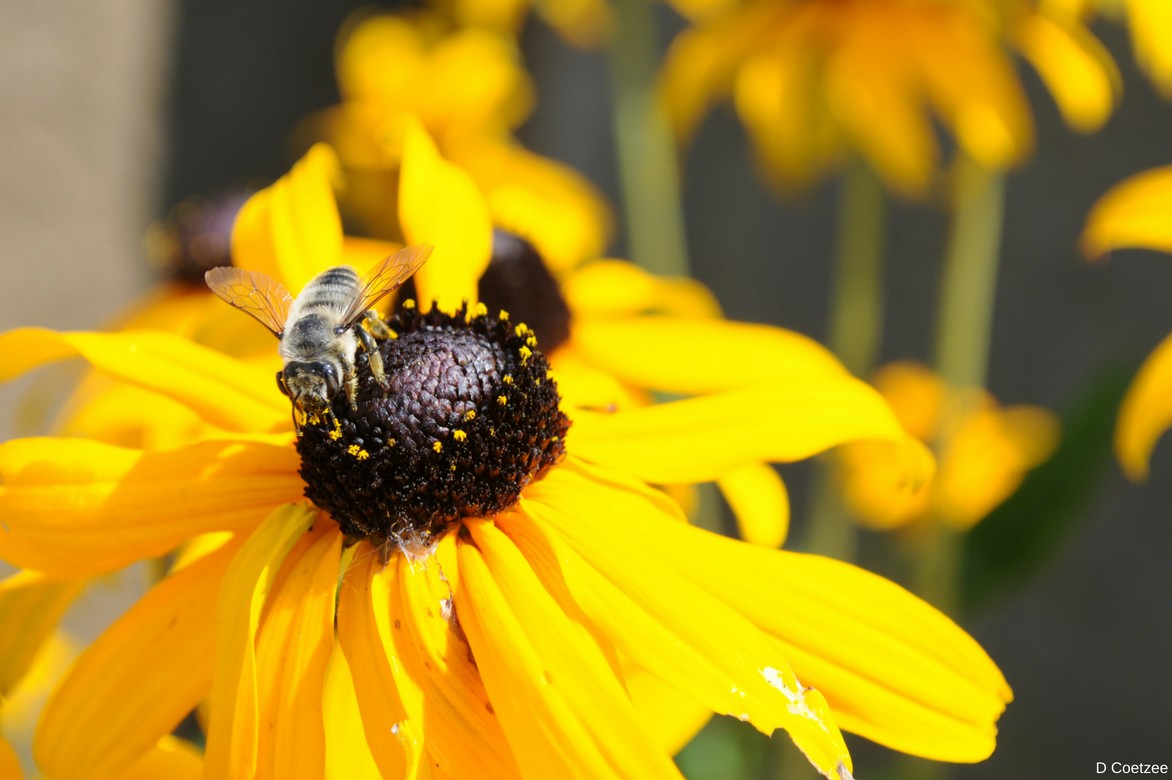
The flowers of Rudbeckias are melliferous.
The browned and mummified cones, suspended from their inflexible stems, particularly graphic, can be incorporated into a dry bouquet.
Easy to grow, the annual Rudbeckia enjoys sunny or semi-shaded situations. This frost-prone perennial is grown as an annual in rich, well-drained soil, with a compost addition at planting, remaining fairly moist to achieve opulent flowering. Annual rudbeckias, generally shorter than perennials, are perfect for flowering summer borders and wild-looking beds.
Main species and varieties
Le Rudbeckia hirta or Rudbeckia gloriosa is the most widespread of all annual rudbeckias. It has given rise to a hybrid created by Thompson & Morgan: the Rudbeckia x hirta is part of a new generation of hybrids that flower as early as July on compact plants.
It comes in many varieties with double or single flowers and a wider range of colours than those of perennial rudbeckias, including yellow, orange, mahogany red, rust, or brown, sometimes variegated. Rudbeckia triloba is another annual that bears numerous small golden yellow flowers. Rudbeckia amplexicaulis is distinguished by its large daisies with trailing corollas.
Discover the annual Rudbeckia you are missing in our beautiful collection of seeds, some of which are mixed and in unusual colours.
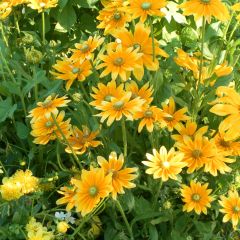
Rudbeckia hirta Prairie Sun Seeds
- Flowering time August to November
- Height at maturity 80 cm
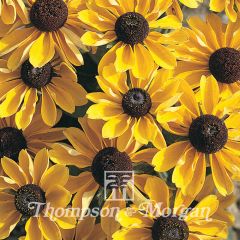
Rudbeckia hirta Toto
- Flowering time August to November
- Height at maturity 25 cm

Clasping coneflower Seeds - Rudbeckia amplexicaulis
- Flowering time August to October
- Height at maturity 60 cm
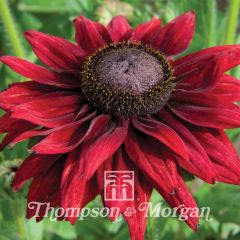
Rudbeckia hirta Cherry Brandy Seeds
- Flowering time August to November
- Height at maturity 60 cm
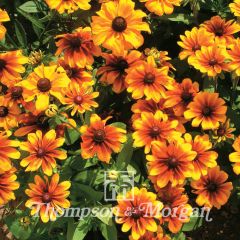
Rudbeckia Rustic Dwarf Mixed Seeds - Rudbeckia hirta
- Flowering time August to November
- Height at maturity 60 cm
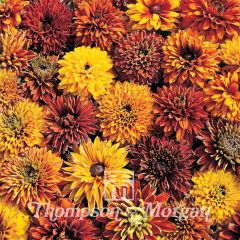
Rudbeckia hirta Cherokee Sunset
- Flowering time August to November
- Height at maturity 75 cm
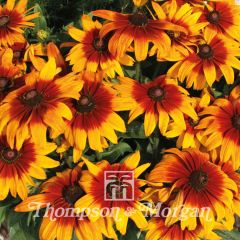
Rudbeckia hirta Cappuccino
- Flowering time August to November
- Height at maturity 80 cm
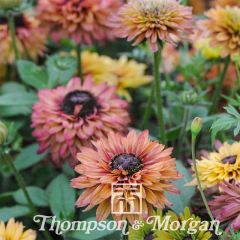
Rudbeckia hirta Caramel mixed
- Flowering time August to November
- Height at maturity 50 cm
Discover other Rudbeckia seeds
View all →Available in 1 sizes
Available in 1 sizes
Available in 1 sizes
Available in 1 sizes
Available in 1 sizes
Available in 1 sizes
Available in 1 sizes
Available in 1 sizes
Available in 1 sizes
Available in 1 sizes
Sowing and planting
Where to plant annual rudbeckia
The annual rudbeckia can be sown and grows in almost any soil, thriving best in soil that remains cool and rich in organic matter, which will allow the plant to bloom well. It enjoys a sunny position.
This is a sturdy plant that is not afraid of wind, nor occasionally of intense heat.
Plant it in groups for beautiful effects in ephemeral compositions. In gardens, biennial rudbeckias will rise from their ashes if the winter is not too harsh but will not last more than 2 to 3 years.
Some varieties are distinguished by their small size (about twenty centimetres in height), slightly smaller than other varieties of the species: they are wonderful in borders or pots or to enliven slopes.
The tallest varieties will bloom all summer, and the naturalistic beds will enchant the sunny mixed borders.
When to sow annual rudbeckia
Sow the annual rudbeckia in a warm place, under cover, from February to March in trays or directly in the ground in April-May. Wait until the soil is well warmed to plant these frost-sensitive annual flowers.
How to sow annual rudbeckia
Under cover
Sowing under cover is the method that yields the best germination rates.
- Fill pots or a seed tray with good planting compost and then lightly firm the compost
- In pots, make a hole with a pencil of a maximum of one centimetre and place 2 or 3 seeds per hole or sow your seeds broadcast in a tray
- Cover the seeds with 5mm of compost or vermiculite and then lightly firm
- Water with a fine spray
- Keep the substrate moist until the seedlings emerge, which takes between 10 to 21 days
- Keep the seedlings in light at a temperature of 20°c to 25°c
- In April, transplant into individual 7 cm pots placed under cover
- Keep the compost moist but not soggy
- At the end of May to early June, when the soil is warmed in the garden and the risk of frost has passed, plant the young plants in place
- You can also plant them in pots on a sunny terrace
- Add a good handful of compost to each planting hole
- Space the plants 30 cm apart
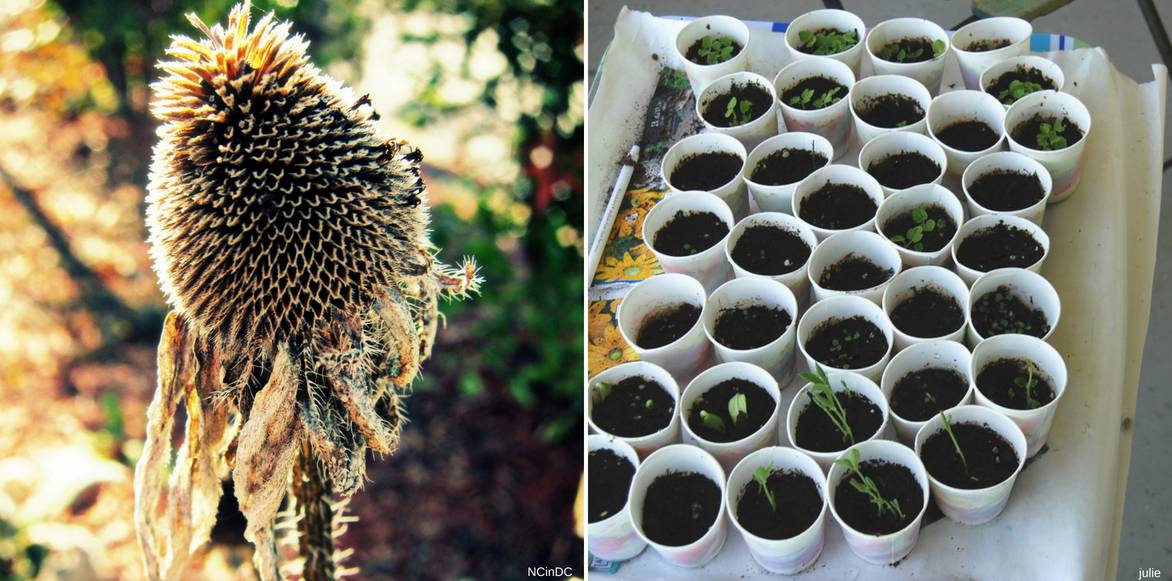
Faded rudbeckia and sowing.
In the ground
You can also sow directly in place the seeds of annual rudbeckia, in warmed soil between April and May depending on the region, in a sunny position and in well-drained soil previously amended with compost. Sow 2 or 3 seeds per cluster every 30 cm or sow broadcast. Thin the sowing in this case.
Pot culture
Sow your rudbeckia seeds in individual pots (read our tips above for sowing annual rudbeckia). After hardening your seedlings for 15 days before their final planting, place your annual rudbeckia in a large pot (30 cm in diameter), in a mix of soil and planting compost supplemented with a handful of compost and a slow-release organic fertiliser. Mulch to maintain moisture at the base.
Care and Maintenance of Annual Rudbeckia
Frost-sensitive, the annual Rudbeckia requires little attention, only fearing frost. Once well established, it demands minimal care as long as the soil remains perfectly drained, sufficiently nourishing, and cool in summer.
Rudbeckia has a great need for water after transplanting. A good mulch will limit watering. Keep the soil cool, especially during prolonged dry spells: water once a week.
In pots, it needs to be watered very regularly to keep the substrate slightly moist.
You can add a fertiliser for flowering plants to support flowering.
To prolong flowering, remove faded flowers as they appear.
In autumn, pull up the clumps or leave the black centres of the dried flowers in winter to attract birds, and repeat this operation in spring. With a mild winter, the annual Rudbeckia could rise from its ashes!
Pests and potential diseases
Young shoots of rudbeckia are endangered by gastropods at the start of the growing season: protect the foliage from attacks by slugs and snails with fern manure, a bowl of beer, or even barriers of ash.
It can sometimes be susceptible to powdery mildew.
Associate
The annual Rudbeckia is a plant that offers a vibrant flowering display for many months. With its intense colours, radiant flowers, and generous long flowering period, Rudbeckia is the ideal candidate for creating exuberant and ephemeral displays in large flower beds, rockeries, borders, or low naturalistic-inspired masses. It is the must-have annual for creating wild-looking and lush scenes in the heart of summer.
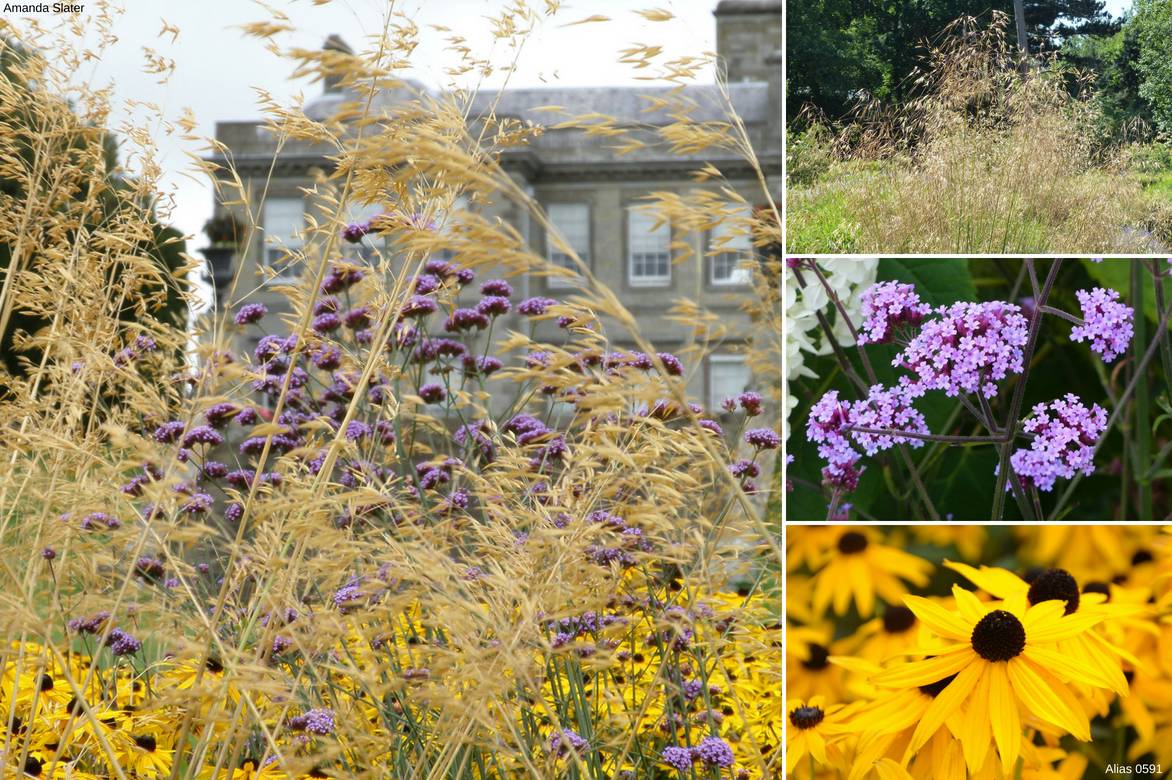
An example of a natural association: Stipa gigantea, Rudbeckia hirta, and Verbena bonariensis.
With its strong chromatic presence and conquering appearance, it provides contrast or plays harmoniously with vibrant tones. It is a staple of yellow gardens.
It happily coexists with other sun-loving annuals, allowing for endless colour combinations: the choice is infinite!
Its golden yellow, pure yellow, or brick flowers with brown centres resembling daisies pair beautifully with warm-coloured flowers such as early Chrysanthemums, marigolds, dwarf Coreopsis, Celosias, California poppies, nasturtiums, or dwarf sunflowers, gaillardias, or Calendula.
For a worry-free summer filled with bright flowers, plant Rudbeckia alongside anthemis, large bright red zinnias matched with some zonal geraniums and a row of semperflorens begonias.

An idea for a warm-coloured association: Rudbeckia hirta ‘Prairie Sun’, Crocosmia, and Zinnia ‘Profusion Double Fire’.
It will be beautifully complemented by the daisies of Bidens.
A backdrop composed of yellow variegated grasses like Miscanthus will add softness and movement, contrasting with the somewhat stiff habit of the Rudbeckias.
It will create beautiful contrasts with the pure blue or violet of some annual verbenas and mealy sages.
In borders or pots, it will accompany other annuals like diascia, Lobelias, or Petunias. Cultivars of coleus with fiery hues are also suitable companions.
The annual Rudbeckias with excellent vase life make vibrant summer bouquets with gladioli, echinaceas, heleneas, yarrow, or even asters.
Useful resources
- How to succeed in your sowing of annuals or sow annual seeds? All our tips are on our blog
- How to compose a yellow and blue garden?
- Subscribe!
- Contents
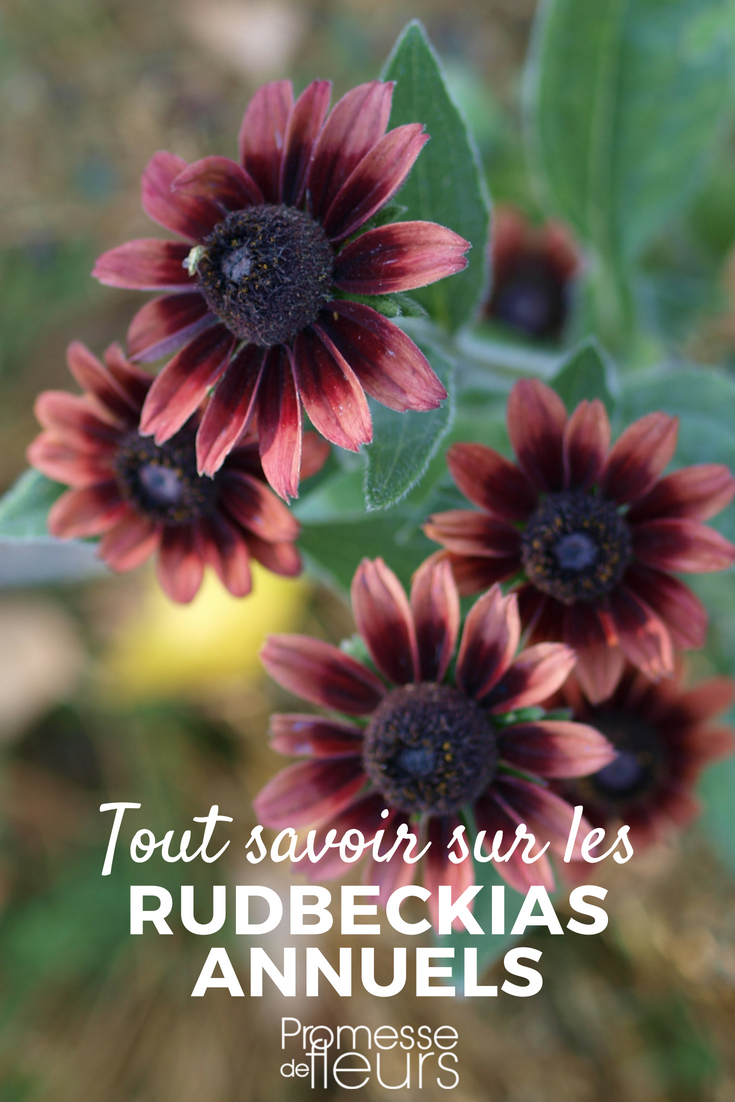

































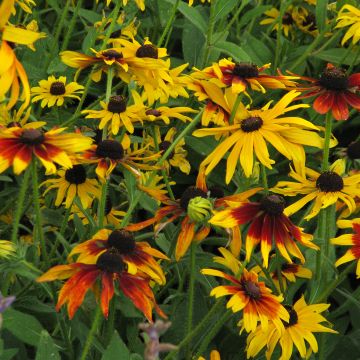
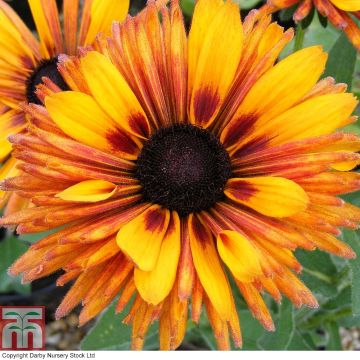
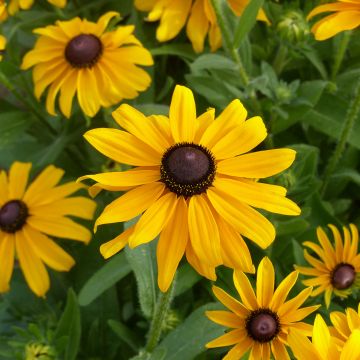
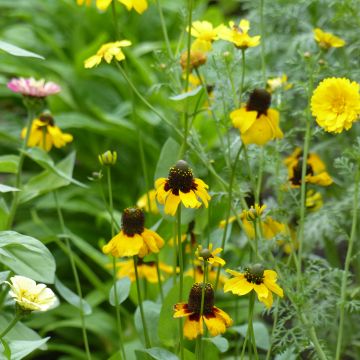
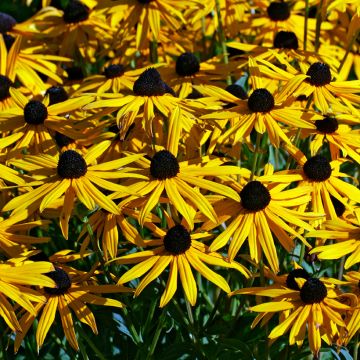
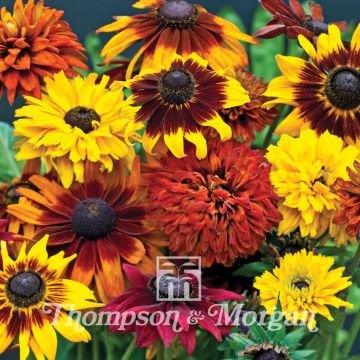

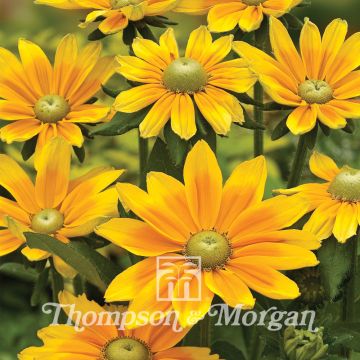
Comments